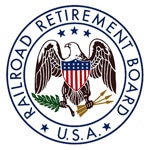On Friday, October 14, 2016, SMART Union united with the Brotherhood of Locomotive Engineers and Trainmen (BLET), Brotherhood of Maintenance of Way Employees Division (BMWED) and the Brotherhood of Railroad Signalmen (BRS), in a joint statement to the Federal Railroad Administration (FRA) that voiced their collective opposition to a recent CSX petition requesting permission from the FRA to remove approximately 125 signals from a stretch of track in Michigan.
Citing reasons of crew safety and public safety, SMART Transportation Division (SMART TD) President, John Previsich and SMART TD Michigan State Legislative Director, Jerry Gibson, worked with SMART and SMART TD’s legislative offices and and leaders from the BLET, BWED and BRS in requesting that the FRA deny CSX’s request.
“Considering the number of residents, homes, schools and churches along this line, and the safety risk involved if these signals are removed, we oppose this request and ask the FRA to deny this wavier,” stated SMART Transportation Division President, John Previsich.
Gibson emphasized safety concerns and also connected the dots between the outcome of the presidential election and future decisions made by the FRA and other president-appointed federal industry boards.
“The SMART TD Michigan State Legislative Board opposition is based on the reason signal systems are put into place: Employee and public safety. As a former qualified engineer and conductor on this line, the territory has a winding path with poor long distance sightlines, making the operable signal system that is currently in place critical to crew and public safety.
“While many may not see the direct correlation between this issue and voting for those candidates endorsed by the SMART TD National Legislative office and State boards, it is a great example. The President of the United States appoints the Director of the Federal Railroad Administration, Surface Transportation Board, Railroad Retirement Board, Department of Labor, and Department of Transportation, to name a few – all of which have the power to determine if these requests are approved or denied,” he stated.
Gibson also added: “If we cast our vote in the wrong direction, the outcome of many issues that directly affect rail labor and their families with be compromised,”
To read the joint labor statement to the FRA, please click here.
Author: amyr

The following questions and answers provide information on how military service may be credited towards railroad retirement benefits.
1. Under what conditions can military service be credited as railroad service?
The intent behind the crediting of military service under the Railroad Retirement Act is to prevent career railroad employees from losing retirement credits while performing active duty military service during a war or national emergency period. Therefore, to be creditable as compensation under the Railroad Retirement Act, service in the U.S. Armed Forces must be preceded by railroad service in the same or preceding calendar year. With the exceptions noted later, the employee must also have entered military service when the United States was at war or in a state of national emergency or have served in the Armed Forces involuntarily. Military service is involuntary when an employee is required by law, such as Selective Service System conscription or troop call-up from a reserve unit, to leave railroad service to perform active duty military service.
Only active duty military service is creditable under the Railroad Retirement Act. A person is considered to have been on active duty while commissioned or enrolled in the active service of the Armed Forces of the United States (including the U.S. Coast Guard), or while ordered to Federal active duty from any reserve component of the uniformed Armed Forces.
2. What are some examples of creditable service performed by a member of a reserve component, such as the Army Reserve?
Any military service a reservist was required to perform as a result of a call-up to active duty, such as during a partial mobilization, would be creditable under the Railroad Retirement Act, so long as the military service was preceded by railroad service in the same or preceding year.
Annual training duty as a member of a reserve component of a uniformed service is also considered active duty and may be creditable, provided the employee service requirement is met. The period of active duty for training also includes authorized travel time to and from any such training duty. However, weekend alone or evening reserve duty is not creditable.
Active duty in a State National Guard or State Air National Guard unit may be creditable only while the reservist was called to Federal active duty by the Congress or President of the United States. Emergency call-up of the National Guard by a governor for riot or flood control would not be creditable.
3. What are the dates of the war or national emergency periods?
The war or national emergency periods are:
- August 2, 1990, to date as yet undetermined.
- December 16, 1950, through September 14, 1978.
- September 8, 1939, through June 14, 1948.
If military service began during a war or national emergency period, any active duty service the employee was required to continue in beyond the end of the war or national emergency is creditable, except that voluntary service extending beyond September 14, 1978, is not creditable.
Railroad workers who voluntarily served in the Armed Forces between June 15, 1948, and December 15, 1950, when there was no declared national state of emergency, can be given railroad retirement credit for their military service if they:
- performed railroad service in the year they entered or the year before they entered military service, and;
- returned to rail service in the year their military service ended or in the following year, and;
- had no intervening non-railroad employment.
4. How can military service be used to increase benefits paid by the Railroad Retirement Board (RRB)?
Railroad retirement annuities are based on length of service and earnings. If military service is creditable as railroad service, a person will receive additional compensation credits for each month of creditable military service and railroad service credit for each active military service month not already credited by actual railroad service.
Creditable military service may be used in addition to regular railroad service to meet certain service requirements, such as the basic 10-year or five-year service requirements for a regular annuity, the 20-year requirement for an occupational disability annuity before age 60, the 25-year requirement for a supplemental annuity, or the 30-year requirement for early retirement benefits.
5. Can United States Merchant Marine service be creditable for railroad retirement purposes?
No. Service with the Merchant Marine or civilian employment with the Department of Defense is not creditable, even if performed in wartime.
6. Are railroad retirement annuities based in part on military service credits reduced if other benefits, such as military service pensions or payments from the Department of Veterans Affairs, are also payable on the basis of the same military service?
No. While railroad retirement employee annuities are subject to reductions for dual entitlement to social security benefits and, under certain conditions, Federal, State, or local government pensions, as well as certain other payments, railroad retirement employee annuities are always exempt from reduction for military service pensions or payments by the Department of Veterans Affairs.
7. Are the unemployment and sickness benefits payable by the RRB affected if an employee is also receiving a military service pension?
Yes. The unemployment and sickness benefits payable by the RRB are affected if a claimant is also receiving a military service pension. However, payments made by the Department of Veterans Affairs will not affect railroad unemployment or sickness benefits.
When a claimant is receiving a military service pension or benefits under any social insurance law for days in which he or she is entitled to benefits under the Railroad Unemployment Insurance Act, railroad unemployment or sickness benefits are payable only to the extent to which they exceed the other payments for those days. In many cases, the amount of a military service pension precludes the payment of unemployment or sickness benefits by the RRB. Examples of other such social insurance payments are firefighters’ and police pensions, or certain workers’ compensation payments. Claimants should report all such payments promptly to avoid having to refund benefits later.
8. Can proof of military service be filed in advance of retirement?
Railroad employees are encouraged to file proofs of their military service well in advance of retirement. The information will be recorded and stored electronically until they actually retire. This will expedite the annuity application process and avoid any delays resulting from inadequate proofs of military service.
If employees do not have an official record of their military service, their local RRB office will explain how to get acceptable evidence. All evidence brought or mailed to an RRB office will be handled carefully and returned promptly.
9. How can an employee get more information about the crediting of military service by the RRB?
More information is available by visiting the agency’s website, www.rrb.gov, or by calling an RRB office toll-free at 1-877-772-5772. Persons can find the address of the RRB office serving their area by calling the RRB’s toll-free number or at www.rrb.gov.
Effective September 1, 2016, changes have been made to the Discipline Income Protection Program (DIPP). Click here for more information.
One of two Long Island Rail Road (LIRR) commuter lines reopened this morning following the crash that occurred Saturday night when a commuter train sideswiped a work train that was blocking the track. Read the complete story from NYDailyNews.com.

All active and retired railroaders are welcome. The gathering will take place from 1:00 p.m. to 5:00 p.m. with lunch served at 2:00 p.m.
The menu includes a choice of five entrees: roast sirloin of beef with a mushroom glaze, shrimp scampi, chicken piccata with capers, or parmesan-encrusted filet of Sole. All entrees include salad, rolls with butter, potato, vegetable and cheesecake dessert. Coffee and tea will also be provided.
The price for attendance is $40 with an advance registration or $45 at the door. RSVP as soon as possible to John Herrmann by calling 925-465-4122.
Spenger’s is located opposite the Berkeley Amtrak Station at the Capital Corridor Train stop. Attendees are encouraged to take the train. Validated parking is also available for the first 1.5 hours opposite Spenger’s. For additional information, call Herrmann at 925-465-4122.
For months now, coverage of Donald Trump and Hillary Clinton has saturated our nation’s news coverage. And thanks to Trump’s ability to swamp the media with the insults he hurls and gaffes he makes, that coverage is too often light on substance.
Not enough is being reported on or shared with voters about the stark differences between the candidates on major issues that affect our economy — including the state of our transportation infrastructure. We hardly hear a word in the news coverage about what Clinton and Trump will do about suffocating commutes, aging infrastructure, choke points in our freight network and technology upgrades waiting to be deployed. Disparaging comments aimed at major swaths of our populations, apparently, sell more TV ads.
Today, the AFL-CIO’s Transportation Trades Department (TTD) is hoping to change that with the launch of their new campaign #SheWillFixIt. Their goal is to educate working people in transportation, and those who care about the quality, reliability and safety of our transportation system, about the candidates’ plans to fix our aging transportation system. Hint: that should be literally everyone.
This initiative isn’t about making Donald Trump look bad — he does that quite well all on his own. This is about taking a close look at the candidates’ views on the issues that matter to America’s transportation workforce, including Clinton’s and Trump’s vision (or lack of one) and specific proposals to modernize a sadly deteriorated transportation system.
Join the conversation at www.SheWillFixIt.org and share the content with your friends, co-workers and family.
I haven’t met a Democrat who enjoys crushing traffic, overcrowded subways or ports that can’t meet the needs of our businesses. And I haven’t met a Republican who enjoys cascading flight delays, dangerously aged bridges or Amtrak train delays.
But there is a candidate in this race who understands the severity of these problems, has a plan to fix it and has pledged to make it a priority in her first 100 days in office. Learn more about how #SheWillFixIt.
ABC News.com reported that following last week’s deadly New Jersey Transit crash in Hoboken that killed a woman standing on the platform and injured more than 100 commuters, NJT announced a new mandate that requires the presence of both the engineer and a conductor during the final phase of the commute, when the trains are pulling into NJT’s Hoboken or Atlantic City stations. Read the complete article here.
Contact your elected officials in support of two-person crew legislation, through the SMART TD Legislative Action Center.
